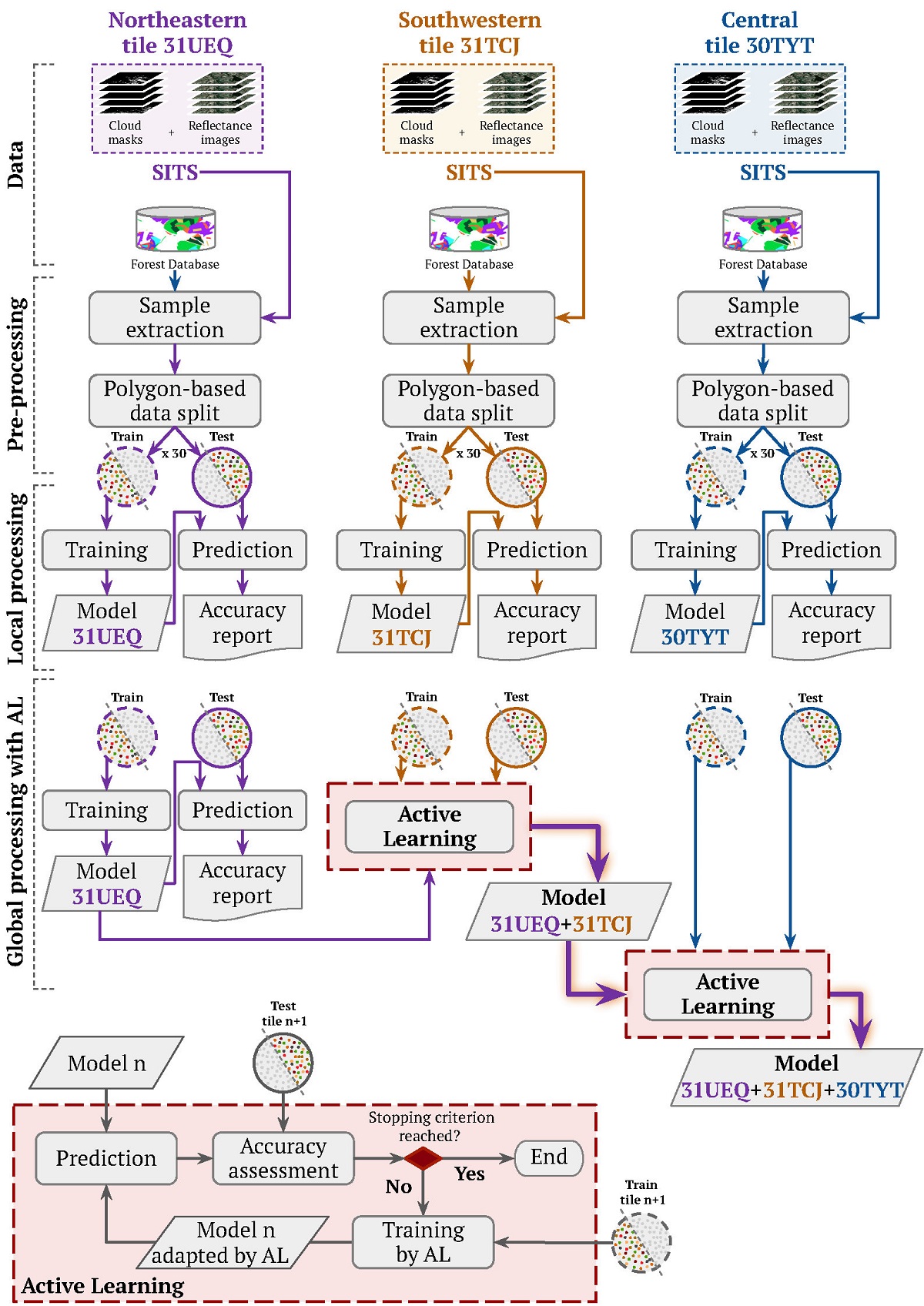Reliable estimates of poplar plantations area are not available at the French national scale due to the unsuitability and low update rate of existing forest databases for this short-rotation species. While supervised classification methods have been shown to be highly accurate in mapping forest cover from remotely sensed images, their performance depends to a great extent on the labelled samples used to build the models. In addition to their high acquisition cost, such samples are often scarce and not fully representative of the variability in class distributions. Consequently, when classification models are applied to large areas with high intra-class variance, they generally yield poor accuracies. In this paper, we propose the use of active learning (AL) to efficiently adapt a classifier trained on a source image to spatially distinct target images with minimal labelling effort and without sacrificing classification performance. The adaptation consists in actively adding to the initial local model, new relevant training samples from other areas, in a cascade that iteratively improves the generalisation capabilities of the classifier, leading to a global model tailored to different areas. This active selection relies on uncertainty sampling to directly focus on the most informative pixels for which the algorithm is the least certain of their class labels. Experiments conducted on Sentinel-2 time series showed that when the same number of training samples was used, active learning outperformed passive learning (random sampling) by up to 5% of overall accuracy and up to 12% of class F-score. In addition, and depending on the class considered, the random sampling required up to 50% more samples to achieve the same performance of an active learning-based model. Moreover, the results demonstrate the suitability of the derived global model to accurately map poplar plantations among other tree species with overall accuracy values up to 14% higher than those obtained with local models. The proposed approach paves the way for national-scale mapping in an operational context.

